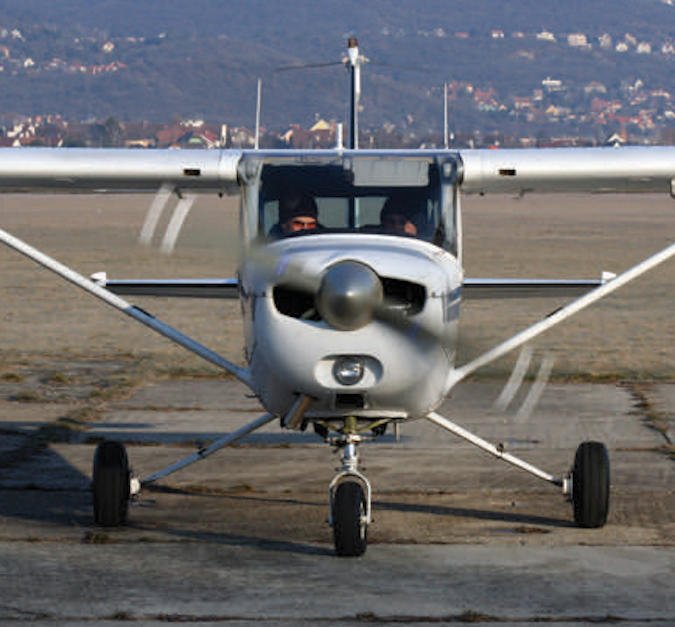We own and fly a Diamondstar DA40 from our home in Michigan to destinations all over the country. Generally my wife and I plan a two-week trip each fall and spring, often to the coasts. However, the word “plan” is figurative as we expect weather deviations and our routing may change at any time. We literally wake up in the morning, look at the current weather and decide our destination for the day. Typically, we will fly no more than 500 miles and land at a suitable GA airport. While I button down the airplane, my wife books a hotel, rents a car and finds out what to see and do in town from the always-friendly and helpful FBO staff.
We have a U.S. map at home with 200-plus pins in it, representing that many great places we have been, most of which we would never have otherwise visited. Every city and town has a unique charm, great music, art and restaurants. We call our journeys the “ultimate road trips.”
Weather has grounded us for two or three days in places like Rapid City, Tulsa, Bozeman and Nashville. Invariably, we find interesting and kind locals with tips on where to hike, drive, eat, etc.
Exploring this beautiful country in a small GA aircraft is an unparalleled joy. We may never reach our planned destination. However, it doesn’t really matter because the adventure is in the travel. To us, low and slow is the way to go!
David Osher
Franklin, Mich.
We have a method similar to your map with push-pins to keep up with our travels to out-of-the-way places we accessed via a personal airplane. You’re doing it right!
Part 91 Fatigue

While I certainly agree with Dave Higdon’s assertion that entry-level airplanes can be used as traveling machines (“Entry-Level Travel,” August 2017), I would take exception to his comment that one could use such an airplane to make a 1000-mile trip with four 2.5-hour legs and a one-hour stop at three points in about 13 hours. While the math is correct, I don’t think suggesting 13 hours of travel in a slow, tight, noisy, non-pressurized aircraft is appropriate in a publication called Aviation Safety. Fatigue is clearly associated with lower pilot performance and therefore with an increased probability of an accident.
Regardless of the airplane used, I think all pilots should establish a maximum number of hours they will fly in any 24-hour period. While such duty limits are not mandated for those of us in Part 91 operations, they are a very good idea.
Jerrold Seckler
Via email
You raise a good point about stringing together four 2.5-hour legs to cover 1000 miles in one day aboard a small, slow airplane and the fatigue that can result. Paraphrasing Clint Eastwood, we all have to know our limitations, and we certainly don’t think any pilot—under Part 91, 135 or 121—should fly more than he or she is comfortable.
Old Or Bold, Choose One
I’ve written to you before concerning Mike Hart’s propensity to fly VFR-on-top in a single in the mountains, and he’s at it again (“Constant Contact,” July 2017).Actually, the same applies to IFR or night flight in a single in mountainous terrain. One day, if you fly long enough, the engine will quit and, without visual reference to the ground, you are doomed. It has happened to me, as I once reported to you in one of my letters a year ago. I realize this is done all the time, and the chances are slight, but not zero, and may tend to increase with the aging of the general aviation fleet.
As an aside, I have flown in and out of Salmon and extensively throughout Idaho over many years. The older I get, the more conservative I have become.
As they say, there are old pilots and there are bold pilots, but there are no old, bold pilots.
Morton Doran
Fairmont, B.C.




